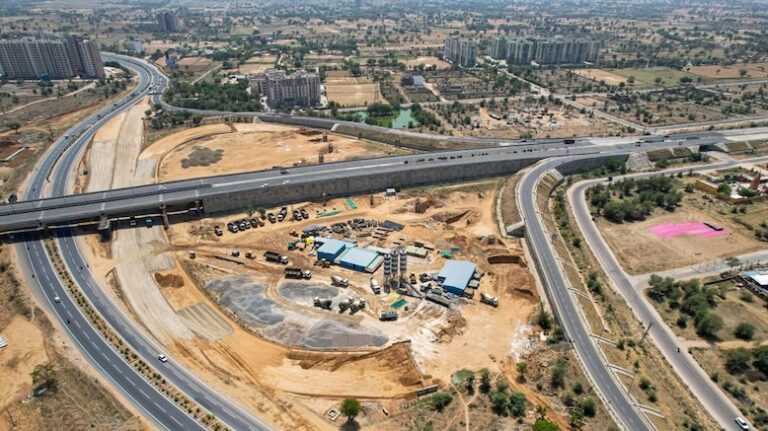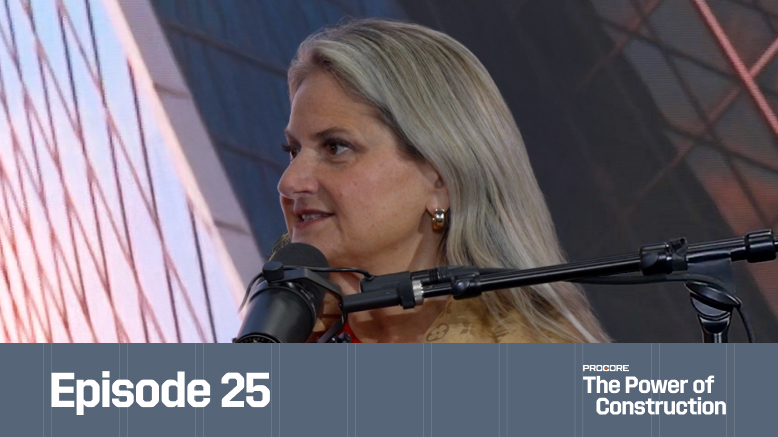— 4 min read
How Leveraging Field Data Accelerates Public Sector Pay Apps & Invoice Processing


Last Updated Oct 21, 2025

Chap Munger
Senior Construction Manager
Chap Munger is a Senior Construction Manager at the Sewerage & Water Board of New Orleans (SWBNO), specializing in civil engineering, heavy industry, and project management. Prior to this, he served as a Project Engineer for Legacy Professional Services from 2018 to 2021, where he managed construction workflows via Procore, performed preconstruction reviews, and executed a value engineering solution that saved $250,000 on a project. His experience also includes work as an Associate Engineer for Royal Engineers & Consultants, where he developed QC procedures for the repair of over 29,000 catch basins and managed contractor invoices for road projects exceeding $5 million. Early in his career, he worked as a Senior Project Manager both domestically, developing hydrologic and hydraulic models for drainage districts, and internationally in Dubai, where he managed tender processes and commissioning for infrastructure projects. Chap has a Master of Engineering in Civil Engineering from the University of New Orleans, where he also earned his Bachelor of Science in Civil Engineering.

Jonathan Greene
Writer
Jon Greene is a freelance educator, writer, and award winning theater maker. As an educational writer he has created content, lessons, and led seminars for Young Audiences of Louisiana, Hynes Charter System in New Orleans, Centre Stage School of the Arts in Singapore, 'Friends of The Museum' Docent Workshop in Singapore, The Prague Public High School System, Moleac Pharmaceuticals, and with the Grand Portage Ojibwa Tribe. His work and writing for theater has been featured in Howlround and American Theater Magazine and he is the recipient of 2 regional theater awards in his home of New Orleans. He is a BFA Graduate of Boston University and a previous Kennedy Center Fellow.
Last Updated Oct 21, 2025

As the complexities of municipal projects increase, the inefficient legacy systems they rely on cannot provide the transparency, visibility or real-time data needed. This poses ungainly financial risk in the form of stalled payments.
To address this failure, managers must employ digital solutions that accelerate and standardize the process. This allows them to course-correct toward robust financial stewardship of taxpayer projects.
Here are four steps to take when making that transition.
Table of contents
Step 1: Establish a digital mandate and standardize it.
The ability to track costs down to the penny is not just good business, it is necessary in navigating the high regulatory burden required by federal funders. For it to work everyone must be on board.
- Establish regulated digital tool use. Require the use of digital financial tools within the agency and apps in the field that aggregate real-time data and communicate to expedite invoice processing.
- Leverage executive support. Work with leadership to enforce the new digital workflow, pursuade skeptics and support learning curves.
- Get granular. Take the time to create a cost-coding structure that gets as granular as needed to track key variables required for reimbursement and auditing.
For cost coding we start with the funding source, then the work type, then the unit item, followed by location. Our goal is to have the same level of granularity as the original estimates with cost codes as a way to track that. The key there is to create extensive and long budget codes that are based on the cost codes.

Chap Munger
Senior Construction Manager
Sewerage & Water Board of New Orleans (SWBNO)
Step 2: Make in-the-field reconciliation a core practice.
Cobbling data together weeks after the pay period ends slows processing. Using real-time apps for tracking in the field eliminates delays and promotes a real-time verifiable source of truth between inspectors and contractors.
Verify quantities daily. Have inspectors and contractors work independently to log data and photograph the work completed and quantities installed each day. Then, make reconciliation immediate and collaborative by having both parties agree on the data before signing off.
Pushing all quantity tracking as far into the field and real-time as possible with everything a penny goes to in the daily logs, tracked with a cost code, location, and quantity empowers contractors and inspectors to reconcile and agree right then.
Chap Munger
Senior Construction Manager
Sewerage & Water Board of New Orleans (SWBNO)
Step 3: Harness the speed of automated invoices.
Data that’s clean and quantifiable can flow directly into the agency's tools, streamlining the month-end process and making it audit-ready in a matter of days. This is the big step agencies can take to avoid late payment penalties.
Pro Tip
If you run the daily log report across the entire project, every quantity and every invoice is in there, so it’s good for an audit. The contractors could theoretically just click a button to generate an invoice.
- Integrate tools in the field and office. Making sure that the data flows correctly from the field to the office allows change orders and events to be managed easier and quicker.
- Find and utilize productive features: Investigate what a digitized system can take off your plate, like invoice drafting or pre-reconciled items.
- Have contractors submit immediately. Real-time data means each contractor can submit a highly accurate and audit-ready invoice within days of the billing cycle’s close.
Step 4: Improve internal processing and audit readiness.
Support similar standardization and acceleration for payments. Transparent, verifiable and centralized data shared between parties reduces the time it takes to process an invoice.
- Streamline internal reviews. An invoice backed by a daily time stamp and photo documentation reduces the need for requests for information (RFIs) in disputes.
- Focus on accounting When internal teams aren’t verifying field work, they can focus on swifter accounting checks and funding allocations.
- Have audit-ready information at your fingertips. A single source of truth with records of performed work, verified quantities, and photo documentation is a digital-trail ready for internal or external audits.
Stay updated on what’s happening in construction.
Subscribe to Blueprint, Procore’s free construction newsletter, to get content from industry experts delivered straight to your inbox.

Accelerating the Process
When everything is in there, everything is described, everything is pictured — you are free to pursue not just more funding, but better funding.
Chap Munger
Senior Construction Manager
Sewerage & Water Board of New Orleans (SWBNO)
Agencies can immediately eliminate costly lags between work completed and funds paid by implementing these steps to decrease submission aggregates exponentially.
They allow for optimization, acceleration and standardization of the process, resulting in a centralized data pool that acts as a single source of truth to drive overall project and portfolio success.
Was this article helpful?
Thank you for your submission.
0%
0%
You voted that this article was . Was this a mistake? If so, change your vote
Scroll less, learn more about construction.
Subscribe to The Blueprint, Procore’s construction newsletter, to get content from industry experts delivered straight to your inbox.
By clicking this button, you agree to our Privacy Notice and Terms of Service.
Thank you!
You’re signed up to receive The Blueprint newsletter from Procore. You can unsubscribe at any time.
Categories:
Written by

Chap Munger
Senior Construction Manager | Sewerage & Water Board of New Orleans (SWBNO)
Chap Munger is a Senior Construction Manager at the Sewerage & Water Board of New Orleans (SWBNO), specializing in civil engineering, heavy industry, and project management. Prior to this, he served as a Project Engineer for Legacy Professional Services from 2018 to 2021, where he managed construction workflows via Procore, performed preconstruction reviews, and executed a value engineering solution that saved $250,000 on a project. His experience also includes work as an Associate Engineer for Royal Engineers & Consultants, where he developed QC procedures for the repair of over 29,000 catch basins and managed contractor invoices for road projects exceeding $5 million. Early in his career, he worked as a Senior Project Manager both domestically, developing hydrologic and hydraulic models for drainage districts, and internationally in Dubai, where he managed tender processes and commissioning for infrastructure projects. Chap has a Master of Engineering in Civil Engineering from the University of New Orleans, where he also earned his Bachelor of Science in Civil Engineering.
View profile
Jonathan Greene
Writer
Jon Greene is a freelance educator, writer, and award winning theater maker. As an educational writer he has created content, lessons, and led seminars for Young Audiences of Louisiana, Hynes Charter System in New Orleans, Centre Stage School of the Arts in Singapore, 'Friends of The Museum' Docent Workshop in Singapore, The Prague Public High School System, Moleac Pharmaceuticals, and with the Grand Portage Ojibwa Tribe. His work and writing for theater has been featured in Howlround and American Theater Magazine and he is the recipient of 2 regional theater awards in his home of New Orleans. He is a BFA Graduate of Boston University and a previous Kennedy Center Fellow.
View profileExplore more helpful resources

Defending Against Financial & Legal Risks on Megaprojects
The construction industry has seen marked growth in megaprojects. Some experts classify any project over $500 million as a megaproject, while others argue that the build needs to be $1...

Unlocking Project Intelligence: Moving from Raw Data to Actionable Insights
The construction industry faces a wide range of challenges, from ongoing labor shortages to frequent cost overruns. But some the biggest hurdles all stem from unpredictability. The general contractors (GCs)...

Who is accountable for innovation in construction?
Everyone says construction needs to innovate—but no one agrees on who’s actually responsible for making it happen. Is it the owner? The builders? The tech vendor? Or is innovation everyone’s...

Integrated Project Delivery in Practice: A Framework for Collaboration
On construction projects, traditional delivery methods put different stakeholders in their own silos. While the design team feeds drawings and specifications to the general contractor (GC), the GC’s expertise in...
Free Tools
Calculators
Use our calculators to estimate the cost of construction materials for your next project.
Templates
Find a template to help you with your construction project tasks.
Material Price Tracker
Get the latest U.S. retail prices and view historical trends for common building materials.
Glossary
Explore key terms and phrases used in the industry.
